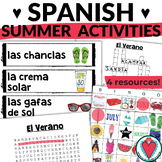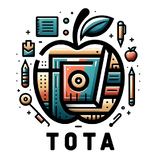14 results
Higher education japanese independent work packets
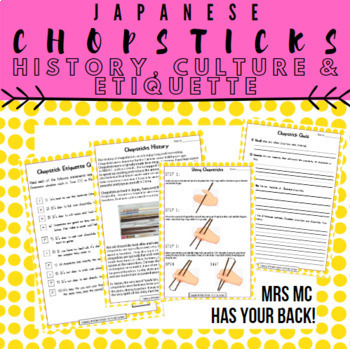
Japanese Food: Chopstick History, Use, Culture, Etiquette Do's and Don'ts Quiz
Teach students how to use Japanese chopsticks (hashi) using the correct social etiquette and techniques. This resource has several reading passages, instructions for how to use chopsticks, fun chopstick training games for the classroom, etiquette do's and don'ts, a short answer and long answer quiz (using AUS QCAA cognitive verbs), a quick true/false quick and modelled responses. Included:Chopstick history: Origins of chopstick invention in China and influence of Chinese cultureChopstick types i
Subjects:
Grades:
7th - 12th, Higher Education, Adult Education

Japanese Food: Bento Box Literacy, Quiz, Design Your Own, Label, Find A Words
This 46 page Bento activity introduces students to bento boxes (the Japanese lunchbox). It covers the three most common types of bento kyaraben, makunouchi and ekiben. There is a literacy activity (reading passage) followed by a short answer quiz, two different build your own bento activities and two find a words. Also included is bento box labelling activities and two different sets of describing bento box ingredients using the 入っています grammar pattern (one set is labelled in Hiragana and the sec
Subjects:
Grades:
4th - 12th, Higher Education, Adult Education

Japanese Food & Money: Grocery Shopping Tsu Hai Counters Unit Cost Daily Living
A massive Japanese shopping and money packet! This 115-page grocery shopping activity covers common shopping phrases, common fruits, vegetables, meat, seafood, toiletries and basic groceries. It also covers how to calculate the unit cost using the unitary method which is also suitable for Year 8 Australian mathematics curriculum (cross-curricular). There is a reference sheet and some practice activities on the Japanese tsu and hai counters for general things and drinks. Students can also practic
Subjects:
Grades:
4th - 12th, Higher Education, Adult Education

Japanese Food: Sweets, Wagashi, Traditional Foods,Washoku, Literacy, Quiz
This 6 page literacy activity introduces students to the development of washoku (Japanese traditional cuisine) and wagashi (Japanese traditional sweets). This touches on Japan's history and trading with China and Korea, westernisation during the Meiji Restoration, geographical advantages, the importance of technological advancements in Japan and the cultural impacts of these. 12 common wagashi are covered, these could be laminated for classroom display, as a lesson hook/warm-up, or for use on c
Subjects:
Grades:
7th - 12th, Higher Education, Adult Education

Japanese Food: Vending Machines Foreign Exchange Rates Business Culture Numeracy
This 30 page literacy and numeracy activity introduces students to the use of vending machines in Japan., Japanese work culture and business and currency conversion. This covers quite a few cross-curricular aspects of work culture in Japan and requires students to calculate the price of common vending machine items in foreign currency.Included:Introduction to vending machinesPopularityRevenueContentsBusiness success of vending machinesThe aging populationPopulation densityLow crime ratesCash bas
Subjects:
Grades:
7th - 12th, Higher Education, Adult Education
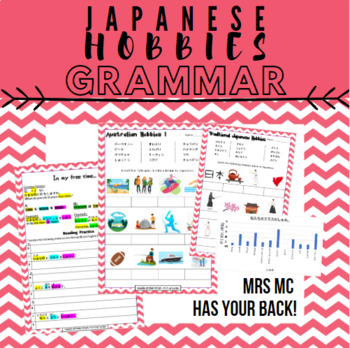
71 Japanese Hobby Activities Shumi Nominalising Verbs Grammar Packet Numeracy
These 71 Hobby activities are suitable for self-paced, distance learning as a Japanese work packet for students. There is a large focus on practicing Katakana and Hiragana in this grammar packet. Grammar such as nominalising verbs with こと and の is covered, 好き , 一番 好きな, 好きじゃない , ひまなとき(暇な時)、できます (出来ます) are included. There's also practice choosing the correct particles and verbs. There are lots of translational reading and writing tasks, some cross-curricular numeracy activities and some cross-cul
Subjects:
Grades:
5th - 12th, Higher Education
Also included in: Japanese Describing Hobbies Verbs Time Grammar Bundle
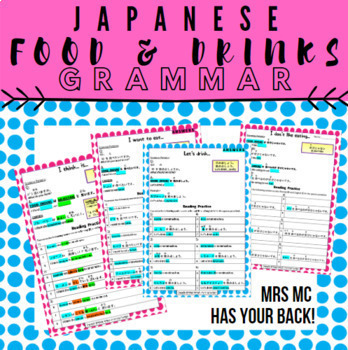
26 Japanese Food Drink Grammar Patterns: I Want/ Think/ Try/ Because/ Let's/Like
Teach students how to describe their favourite foods and drinks with these reading and writing activities. There are 26 grammar patterns that cover how to say 'I want', 'I think', 'Let's', 'I like/don't like', 'because' (providing reasons), 'I will (eat/drink) it and see'/ 'I will try it', 'my number one favourite is' etc. All answers are included, can be used for distance learning. This packet is suitable for high school students, from junior all the way up to senior school students and adults
Subjects:
Grades:
7th - 12th, Higher Education
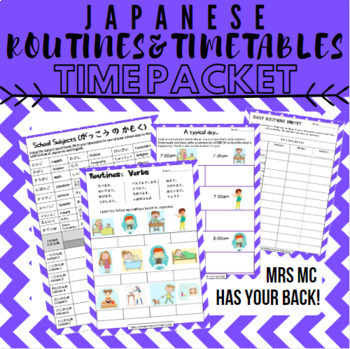
16 Japanese Daily Routines School Timetables Mealtimes Getting Ready Packet
These relative time activities are suitable for self-paced, distance learning as a Japanese work packet for middle and senior school students. Included are lots of common verbs and nouns to describe the daily routines of students for e.g. to sleep, to wake up, to brush teeth, to comb hair, to bathe, to change clothes, to eat etc. Included is also an activity to write their timetable in Japanese and talk about their daily habits and routines both independently and with a partner.Included:• 8 X Ti
Subjects:
Grades:
8th - 12th, Higher Education, Adult Education
Also included in: Japanese Time Mega Bundle: 134 activities

Japanese History: Tokugawa Shogunate, Meiji Restoration, and WWII
This assignment takes students through the isolation of the Tokugawa Shogunate through the expedition of Matthew Perry and the subsequent Meiji Restoration, the Japanese Imperialism (with a brief comparison to European Imperialism), and finally, the attack on Pearl Harbor. There are primary and secondary sources, maps, and videos embedded within this, along with analysis questions for students to answer. It is formatted for google classroom.
Subjects:
Grades:
6th - 12th, Higher Education, Adult Education
Also included in: Asian Studies Bundle

Japanese Conjugating Verbs to Stem and Dictionary Form Quick Summary Guide
This covers 32 common Japanese verbs that are used throughout high school and beyond. These are separated into the three types, Godan, Ichidan and Irregular verbs. I have also further colour coded each verb ending group within each type. For e.g. Godan verbs are separated into ki, mi, shi, bi, ri, i and gi verb endings so that students can pick up the patterns.The purpose of this activity is to step students through verbs in English, Romaji (present, polite), Hiragana (present, polite), verb ste
Subjects:
Grades:
6th - 12th, Higher Education, Adult Education
Also included in: Japanese Describing Hobbies Verbs Time Grammar Bundle
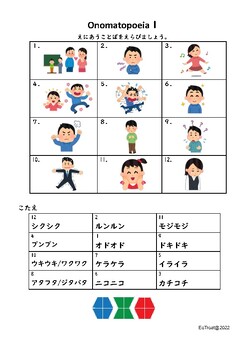
Japanese Onpmatopoeia 1-7 full version (Tutor system)
Onomatopoeia series 1-7Series 1: Describes a people's conditionSeries 2: Everyday LifeSeries 3: Everyday Life/Water relatedSeries 4: Everyday LifeSeries 5: Food relatedSeries 6-7: Animal soundsHow to use Tutor System Youtube videohttps://www.youtube.com/watch?v=gDc-9ww5OzY&t=8s
Subjects:
Grades:
1st - 12th, Higher Education, Adult Education
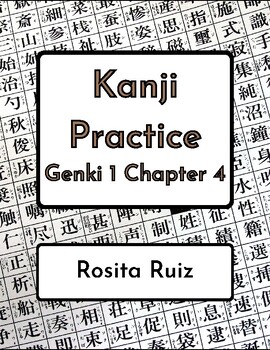
Kanji Practice Genki 1 Chapter 4
Improved Understanding: With this extra practice for the popular Japanese Genki book, students can quickly deepen their understanding of the Kanji characters introduced in Chapter 3. The combination of writing and reading activities allows learners to apply what they have learned and test their comprehension.
Subjects:
Grades:
4th - 12th, Higher Education, Adult Education, Staff
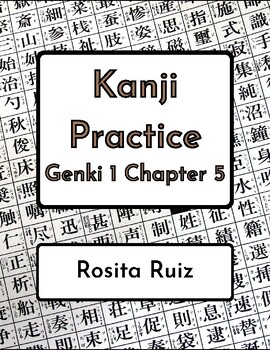
Kanji Practice Genki 1 Chapter 5
Improved Understanding: With this extra practice for the popular Japanese Genki book, students can quickly deepen their understanding of the Kanji characters introduced in Chapter 5. Combining writing and reading activities allows learners to apply what they have learned and test their comprehension.
Grades:
4th - 12th, Higher Education, Adult Education, Staff
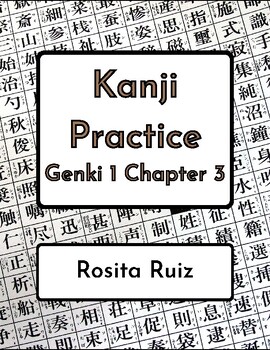
Kanji Practice Genki 1 Chapter 3
Improved Understanding: With this extra practice for the popular Japanese Genki book, students can quickly deepen their understanding of the Kanji characters introduced in Chapter 3. The combination of writing and reading activities allows learners to apply what they have learned and test their comprehension.
Subjects:
Grades:
4th - 12th, Higher Education, Adult Education, Staff
Showing 1-14 of 14 results

